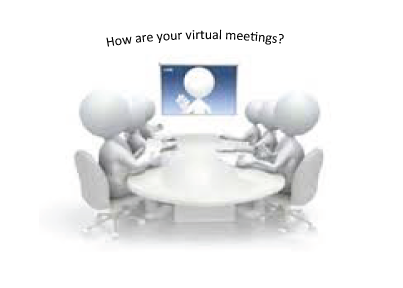May 2008 - The FoCuSeD™ Facilitator eNewsletter

Virtual Facilitation | Gary Rush Facilitation
In this day and age, we have more and more meetings that are teleconferences or video-conferences – virtual meetings. These virtual meetings can be very productive when properly facilitated.
A Different Mindset
When properly facilitated virtual meetings offer a way for groups to come together in real time and collectively achieve a goal or accomplish a task. These can also be cost-effective for organizations. Unlike face-to-face facilitation, you have to approach virtual facilitation differently. With virtual facilitation you lose the use of one of your senses – sight. Even with video-conferences, your ability to see is limited. You never get to see the entire group and if you do, it is from an angle. Eye contact, where you stand, and documenting while facilitating no longer have use in a virtual meeting. What this means is that your abilities to lead, listen, and talk become much more important.
Some concerns you need to be aware of when facilitating virtually are:
- Being Remote:
- Ability to see is limited – use active listening.
- Neither you nor your group can see each other – introduce your group.
- It is difficult to hear when more than one person is speaking at a time – set ground rules.
- All Facilitator interventions are verbal – step in when necessary.
- Constraints:
- It is difficult to see what is being documented – even with videoconferencing.
- Virtual meetings are time-constrained – time management is very important.
Being Remote
You must consider that the group’s sight is limited. Do the following:
- Agenda and ground rules should be mailed (or emailed) in advance and established at the start.
- Ask each participant to introduce him or herself. The group needs to familiarize themselves with each others' voice – it’s the major source of recognition.
- When a participant speaks, ask that they always precede what they have to say by stating their name, “This is Gary. My idea is…”.
- Enforce “one person speaks at a time” ground rule. Be strict with this. Otherwise, it gets confusing, and the group cannot hear what is being said.
- As Facilitator, restate the questions and answers to ensure the group understands.
- Use your Active Listening skills. The major problem with virtual meetings is that it is difficult for the group to know when a point or a decision has been made – because they cannot see what is being documented. The Facilitator must frequently summarize what has been said and frequently check with the group for consensus. If you allow people to discuss ideas too long without summarizing, they tend to lose their point of reference.
- If a participant becomes difficult – wants to dominate the conversation or talk over others – you need to take the lead and step in to re-enforce ground rules. It becomes difficult for the group to help re-enforce them because there is no face-to-face interaction.
Constraints
The constraints are due, largely, to technology and time zone differences. In managing constraints:
- Use good Internet tools, such as MeetingSense, WebIQ, Facilitate Pro, or GoogleDocs. The group needs to see what is being documented.
- Keep the meetings to a reasonable length – 2 hours or less. Longer than 2 hours will wear out participants and is difficult with the different time zones.
- Develop agendas with clear time limits for each step and topic. Remind the group of the time left for each topic as you approach the end of each step.
Conclusion
Face-to-Face is key but… Virtual meetings are the way of the future. Follow the guidelines outlined and you will be able to virtually facilitate effective, productive, and enjoyable meetings. ![]()

